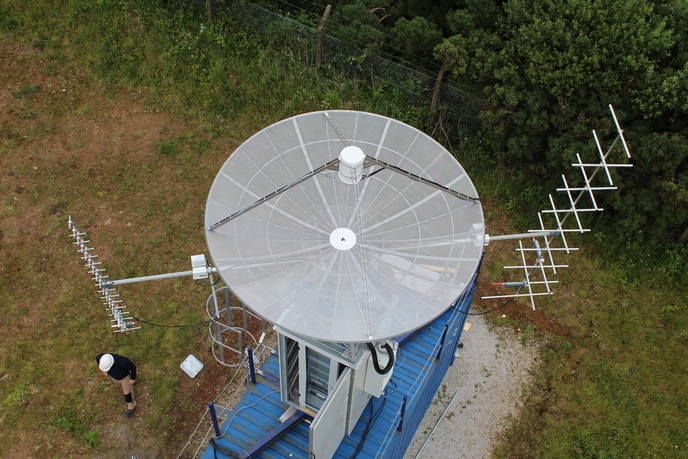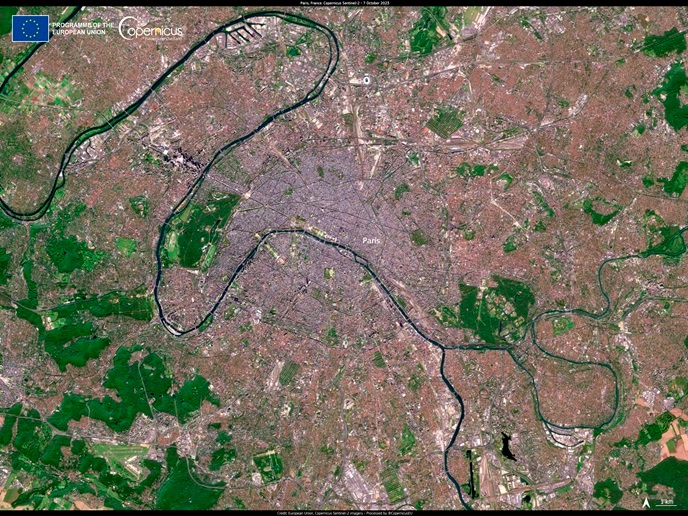Ground station network as a service for next-generation satellites
There is a fundamental difference between space missions as conceived over the past 60 years and what appears to be in store for the future. While past missions were few, highly expensive and led by government agencies, the future playground will see private companies taking an increasing share of the spoils. Which brings us to one major question: what will happen to past operators’ ground stations? Looking at the list of ongoing Horizon 2020 projects, there happens to be one dealing with this very issue: LEAF LINE (The first ground stations network enabling real-time, cost-effective, and easy access to micro/nanosatellite data), coordinated by Leaf Space, which aims to make ground stations suitable for the requirements of small satellite operators and the growing market they represent. “Historically, the ground segment of space missions has mostly been designed, deployed and operated by mission operators themselves,” explains Taylor Dorigatti, Business Developer and Sales Engineer at Leaf Space SRL and coordinator of LEAF LINE. “Smaller satellites in comparison imply less stringent requirements and amounts of data to be transmitted per satellite yet require flexible operations and low latency. In other words, the current ground segment is an overkill.”
Towards a leaner, mean service model
Leaf Space’s agenda consists in moving ground stations towards a service model, thereby considerably reducing management cost for this part of the mission. Let’s take the example of in-orbit demonstration/verification missions: “Placing only a single or a few small satellites in orbit does not justify the costs of developing a proprietary ground segment infrastructure. It is more convenient to outsource this as a service to reduce cost while using a whole network of antennas providing more coverage, lower latency and higher performance,” Dorigatti explains. This is precisely what LEAF LINE is about. The project, which has received funding under phase 1 and 2 of the SME Instrument, is creating a shared ground station network for the ‘new’ space market. As its whole infrastructure is proprietary, the entire service provision can be controlled internally, resulting in increased reliability. Thanks to a scheduler algorithm, the allocation of communication slots is optimised while complying with the specificities of each customer’s requirements. Leaf Space’s objective is to deploy an operational infrastructure of about 20 ground stations worldwide in a couple of years. Four of these stations are already deployed and activated in Europe, and a fifth one is planned for activation in the Azores by the beginning of Q2 2020 along with two others in the US. “We already have an operational ground segment service that is being successfully used by our customers,” Dorigatti enthuses.
Focusing on future expansion
With only 8 months to go before the end of the project, Leaf Space intends to continue prioritising the expansion of this network, as well as bringing new users on board for orbits which have yet to be supported. Ground station performance upgrades will also keep coming, to ensure that Leaf Space always remains a step ahead of competitors. “Our customers are satisfied with the service provision. Considering that we are only in the initial phase of the LEAF LINE network deployment, this is a very good sign for our future development and expansion. We have been able not only to attract but also to retain customers requiring ground segment as a service, who have given us credit for our flexibility and tailoring capacity,” says Dorigatti. The infrastructure will give global coverage by the end of 2020, continuing expansion until 2023 and beyond. In the meantime, Leaf Space will keep improving capacity and extending its customer base.
Keywords
LEAF LINE, Leaf Space, ground stations, small satellites, service, network







